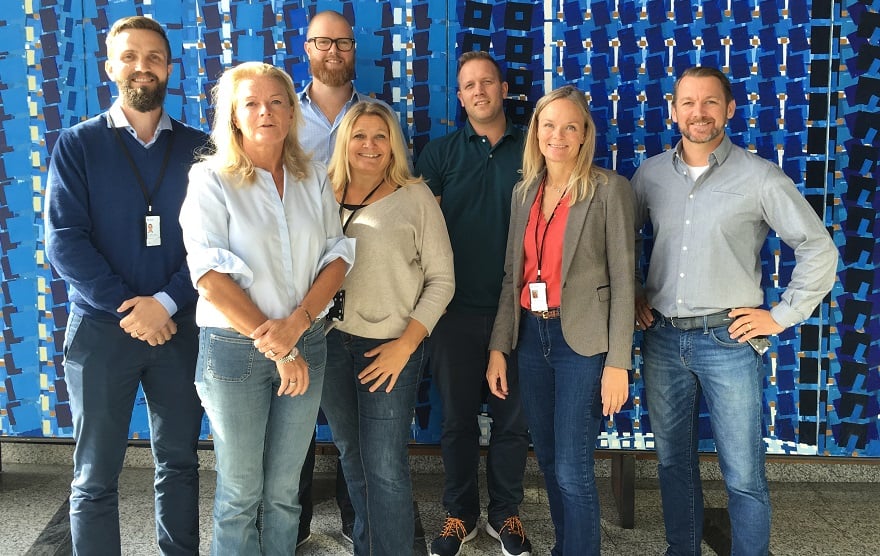Keeping our Polar Waters clean
威尔森观察
|
Capt Haakon Olaisen, HSEQ Superintendent
The Polar Code entered into force from 1 January 2017 and affects operators in these areas. Vessels trading in polar regions - Arctic (north pole region) and Antarctic (south pole region) - are required to have a PWOM, Polar Ship Certificate and qualified crew. Polar Ship Certificates are issued depending on vessel types and survey schedule.
According to the IMO, the Polar Code is a set of additional requirements, above those already in The International Convention for the Safety of Life at Sea (SOLAS) and International Convention for the Prevention of Pollution from Ships (MARPOL), to address the additional hazards to ships operating in polar waters.
As the Polar Code is implemented through amendments to SOLAS and MARPOL, the application of the Polar Code's Part IA and Part IIA varies. Existing ships (ships with a keel lay date earlier than 1 January 2017) have until their first intermediate or renewal SOLAS survey (Safety Construction survey), whichever comes first after 1 January 2018, to comply with Part IA (the safety part). Existing ships must, however, comply with Part IIA (the pollution prevention part) when operating in polar waters on or after 1 January 2017.
source: IMO
Since the code covers the full range of design, construction, equipment, operational, training, search and rescue and environmental protection matters, WSM established a task force to develop the manual and execute requirements for the Viking Ocean Cruises fleet.
Task force: HSEQ Superintendent Capt. Haakon Olaisen, the HSEQ team, and the Cruise Segment team.

Cruise team working on the PWOM: (From left) Paal Berg Lande - Fleet Manager, Tove Nilsson - Manning Superintendent, Yngve Beite - Vessel Manager, Merethe Sellæg - Manning Superintendent, Øyvind Krapf-Sterner - Training & Competence Manager, Ingrid Skarholt - Crew Manager, Haakon Olaisen - HSEQ Superintendent. Absent: Tore Stang – Vessel Manager and Steinar Johannessen – Vessel manager.
Operational Assessment |
|
|
|
Activity: This prerequisite process identifies the conditions that the vessel is expected to trade in, the limitations and control measures needed to comply with the Code. During the time of assessment, our managed cruise vessels were already constructed and equipped with most of the requirements per code. The only additional equipment needed for the vessels’ itinerary was Ice Searchlight, Thermal Protective Aid (for emergency use), heaters for battery rooms, and some minor equipment to prevent and remove icing. |
PWOM and vessel equipment |
|
|
Who? HSEQ team and vessel managers |
Activity: The manual was developed based on Operational and Risk Assessment requirements. The PWOM includes procedures for:
|
Crew Certification |
|
|
Who? Crewing and Training & Competence Manager |
Activity: From early 2017, our Navigational Officers completed the Ice Navigation Course (3-day course) while Master and Senior Deck Officers completed the Advanced Ice Navigation Course (5-day course).
As of 1 July 2018, Denmark and Norway released their respective Flag State requirements for Certificates of Proficiency that includes polar experience and its relevant training courses. Our Officers have applied and received the certificates. |
Vessel Certification |
|
|
Who? Vessel managers |
Activity: When a vessel’s itinerary includes Polar Waters, our vessel managers ensure that equipment is placed on board per PWOM instructions. Our vessels undergo survey by Lloyd’s Register before being issued Polar Ship Certificates (PSC).
This PSC also specifies the limitations in which vessels are allowed to operate. For example, the Viking vessels should avoid temperatures below -10C and stay clear from ice (“Category C” ships as per Polar Code). These certificates are subject to renewal surveys.
The first vessel in our fleet to receive this certificate was Viking Sky in January 2018. |
Still more to do…
The task force gained a lot of valuable experience from the above processes and are proud to be the forefront when we had our PWOM approved and our vessels certified.
The complexity of complying with the Polar Code is itinerary driven and would be more comprehensive for a vessel expecting more adverse environmental conditions. Getting crew qualifications was a big challenge due to the short time between announcing the requirements to entry into force. As a team, we worked very closely with owners to deliver up to the Code’s expectations and protect the Polar Waters in which we operate in.
Capt. Haakon Olaisen HSEQ Superintendent – WSM Norway